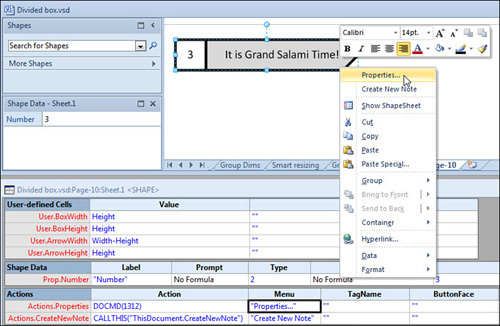Set the Action and Menu cells for the rows as follows:
Actions.Properties.Action = DOCMD(1312)
Actions.Properties.Menu = "Properties..."
Actions.CreateNewNote.Action =
CALLTHIS("ThisDocument.CreateNewNote")
Actions. CreateNewNote.Menu = "Create New Note"
The Menu cells expect strings. If you have trouble, make sure there are
double quotation marks on both sides of the text. Whatever you type in
the Menu cell will show in the right-click menu.
The Action cell does the actual work. Actions can be performed in a
number of ways such as setting ShapeSheet formulas, calling Visio
functions, or invoking macros or add-on code. The first action uses the
DOCMD ShapeSheet formula to call command 1312. This is the command id
for showing the Shape Data pop-up window. The second Action uses the
CALLTHIS function to access a VBA macro that you will write later on.
Figure 10 shows how the Actions section for the notes shape should look.
